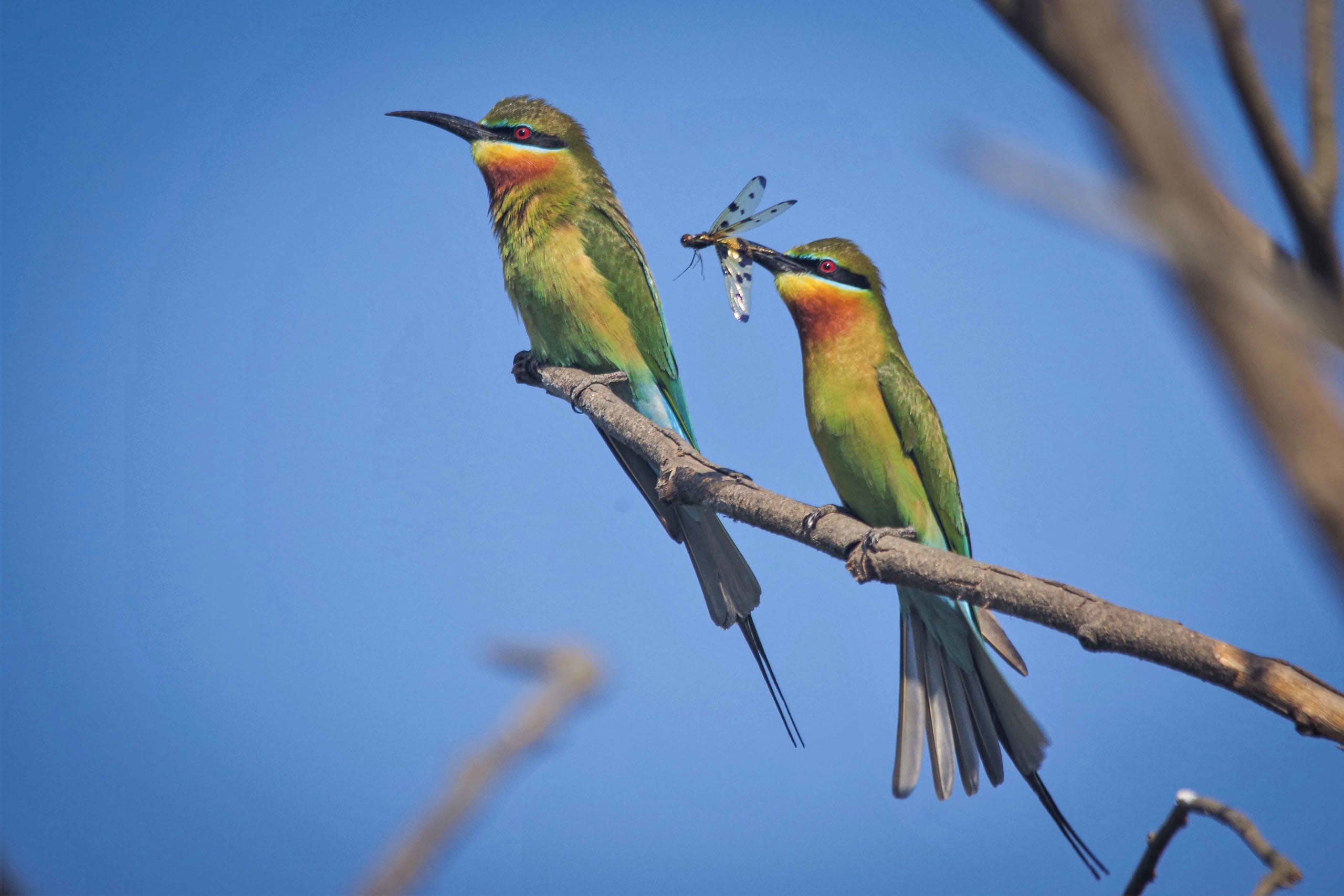 Listen to this article
•
15:34 min
Listen to this article
•
15:34 min
A pair of Indian grey hornbills perched atop a tree, grey-headed swamphens and pond herons wading through a marshy patch, green bee-eaters chasing bees mid-air and an eagle soaring high above in the sky. As I browse through this list of sightings made by birdwatchers, I picture a densely covered forest far away from the metropolitan’s chaos. But that is the beauty of a city like Mumbai that cradles habitats like the Powai Lake within its bustle.

Cover: Blue-tailed bee-eaters grab a meal on the peripheries of Powai Lake. The lake supports a rich diversity of birds and aquafauna that remains understudied and in need of conservation. Cover photo: Ikshan Ganpathi, CC BY-SA 4.0
Powai Lake is a manmade waterbody first built by the British in 1891 to supply drinking water to the city of Bombay. Ever since then, the lake has supported a variety of wildlife. The lake is said to host around 32species of fish. It is also home to a small population of the marsh crocodile, a species protected under the Wildlife Protection Act. In the vicinity you can spot hawks, kingfishers, cormorants, cranes, wild fowl and several other birds.
In 1936, It was leased to the Maharashtra State Angling Association and became a primary angling spot in the city. The association, over the years, tried to eradicate invasive vegetation such water hyacinths which had become abundant on the water body. These weeds hinder fishing activities and disrupt the ecological balance of the lake. However, increasing pollution and unchecked development has hampered the ecosystem.
Due to the immersion of idols during a variety of festivals and discharge of sewage from neighbouring areas the water quality has degraded. In March 2022, an eight-member committee constituted by the National Green Tribunal (NGT) to check levels of pollution for Powai Lake noted that 10.9 million litres of sewage per day flow into the lake directly from surrounding industries, residential areas, and educational campuses.
Residential and industrial complexes, and college campuses have also encroached upon the lake’s area bit by bit over the years. According to a report published in the Times of India, the Jogeshwari-Vikhroli Link Road, or JVLR as it is popularly known, was a 10-feet wide narrow lane which was widened by shrinking the catchment area of the lake. Such rapid urbanisation around the lake has led to many issues such as siltation of the lake and deforestation in the surrounding areas.

In mid-2021, a cycling track was proposed along the periphery of the lake. The BMC claimed that the plans aimed to create a recreational space around the lake without disturbing the ecological balance of the habitat. But contrary to the benefits proposed by the BMC, concerned citizens claim that the construction of this track could be detrimental to the environment. According to activists, the track might be built by cutting trees and reclaiming marshy patches of the lake which are otherwise used by marsh crocodiles to bask and lay eggs. Urban planners too have argued that this plan does more harm than good. An article in Scroll by urban planning researcher Himanshu Burte argues that the municipal corporation’s claims that the cycle track will improve the health of the surrounding ecosystem needs more scientific research.
“Powai lake has always been a man-made reservoir and is considered as a wetland. The crocodiles were never a natural population, they might have been introduced here or may have migrated from other nearby lakes decades ago. However, they have adapted to this ecosystem despite the anthropogenic pressures.” says herpetologist Kedar Bhide, who has been appointed by the BMC to conduct a baseline data study which will assess the impact the project could possibly have on the species. “Preliminary observation points out that a possible nesting area for crocodiles could be near IIT Bombay’s campus. The reptiles require sandy banks and deepwater pools to nest, which the proposed cycle track site lacks. But it can be confirmed only after the study is done. If data shows any sensitive area that supports crocodile population coming under the proposed cycle track, then mitigation measures could be incorporated,” he adds.
Small pockets like the Powai Lake are a refuge for the city’s last remaining wilderness. Development of such public spaces around the lake may come at a huge cost to its ecology. While more studies are needed to gauge its ecological value, it is also vital for us to learn the potential impacts such constructions could have on it in the future.







